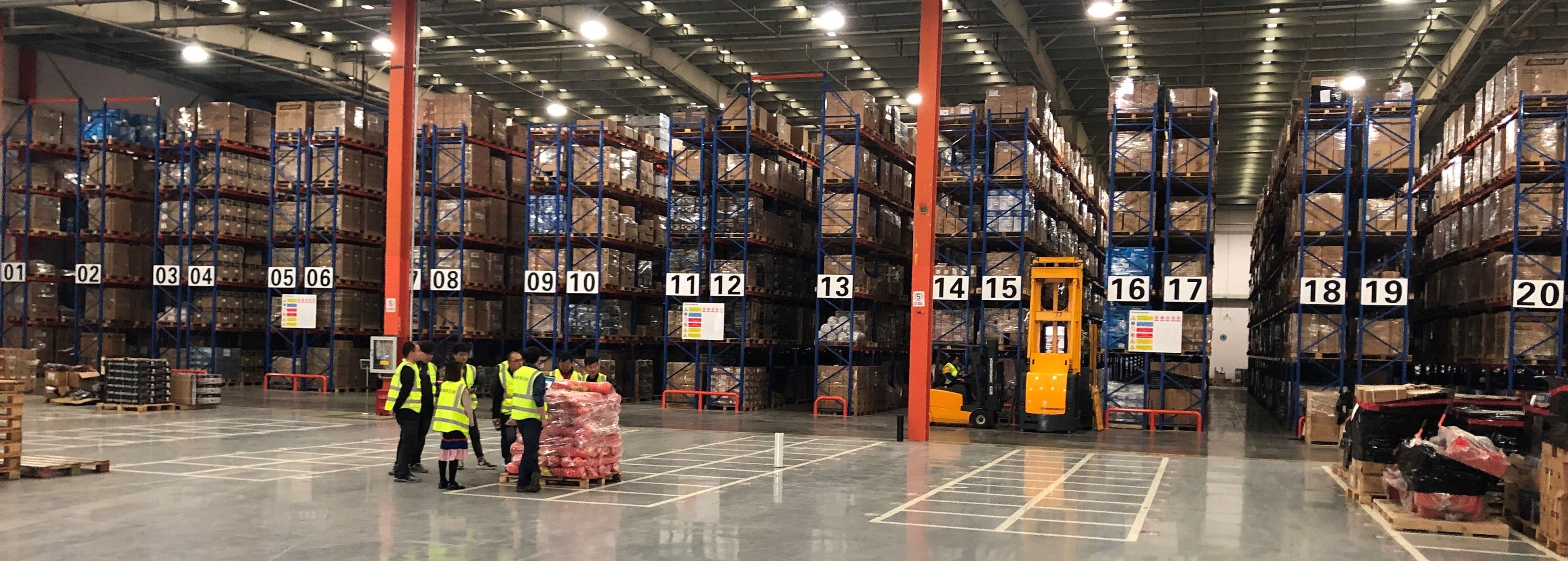A China bonded logistics park (BLP) functions as a sophisticated special customs zone. When goods enter the BLP, they are "exported" from China into the bonded zone. This means that the supplier can get their VAT rebate as if they had shipped a container to a terminal. This is important as supplier cooperation is necessary. Goods are tracked inwards and outwards, but inventory can be held in the BLP warehouse as long as needed. Hence, it is possible to set up a full pick-and-pack warehouse in China. These facilities can serve as comprehensive distribution hubs where goods can be stored, processed, and prepared for shipment before reaching port. What makes this concept particularly powerful is the ability to create store-ready shipments.
Store-ready pallets are packed, containerized, and shipped directly to cross-dock facilities near destination stores. This bypasses traditional distribution centres, ensuring new products, promotion offers, and seasonal merchandise flow through to stores on time.
Benefits of Sending Store-Ready Shipments from China
- Lower Warehousing and Distribution Cost: Cost savings of over 30% can be achieved. This is a substantial saving with the potential to deliver a sustainable supply-led competitive advantage.
- Lower Inventory Holding Cost: The value of goods held in the BLP warehouse doesn’t include shipping. This can reduce inventory holding value by approximately 15%.
- Inventory Optimization: Holding inventory closer to production sources and shipping directly to stores based on real-time demand patterns avoids costly rectification of inventory held in the wrong distribution centre or store.
- Reduced Handling Risk: Fewer touchpoints throughout the supply chain translate directly to reduced damage, loss, and mishandling. Products move from bonded facilities to retail locations with minimal intermediate handling, preserving product integrity and reducing shrinkage.
- Consolidation Advantages: Suppliers do not need to deliver into the BLP warehouse in full container loads. This means that buyers can order what is needed (subject to manufacturing minimum order quantity - MOQ) rather than over-ordering to fill containers. When store-ready containers are shipped, they can contain goods from multiple suppliers, ensuring excellent consolidation advantages.
Will this work for you?
Despite the obvious benefits listed above, this is not a "one-size fits all" solution. Below are some critical success factors that need to be considered and controlled before and after implementation:
- Product Demand and Forecasting Capabilities: The biggest challenge of shipping store-ready from China is the longer lead time to store. Product demand profile and the strength of demand planning systems must be considered. Products that ship regularly to replenish a core range must have a reasonably predictable demand pattern because of the fact that goods on the water are shipped in anticipation of future requirements. New line launches, promotional offers, and seasonal sell-ins are ideal for this model.
- Ability to Fill Containers: Approximately 1.2 cubic metres per 20-foot container space is taken up by the actual pallets, so it is important to achieve excellent utilization of the remaining space. Products must be able to be safely packed up to 2.2 meters high on mixed pallets. Also, it is important to have the capability to adjust allocation to ensure that there are 10 standard pallets (1.1m x 1.1m) in every 20-foot container (20 in a 40FC) and that every pallet is packed to at least 2 meters high.
- Expertise of Service Provider: Achieving container utilization can only be achieved using a warehouse with expertise in store-ready shipping. China customs and destination countries have specific customs requirements for store-ready shipments. Success hinges on selecting China logistics providers and freight forwarders with proven experience managing store-ready shipments across multiple regulatory environments.
- Risk Mitigation: The longer lead time from store order to delivery to store amplifies risk. Unlike delays to distribution centres that impact warehouse safety stock, store-ready delay directly affects retail safety stock and hence the customer experience. Building contingency time into shipping schedules for time-critical shipments is critical.
- Technology Infrastructure: Extended lead times make the need for visibility non-negotiable. Choose logistics and shipping providers capable of delivering real-time tracking from store order placement through arrival at destination cross-dock facilities. Success demands sophisticated inventory management systems, real-time communication capabilities, and seamless integration between Chinese facilities and destination operations. Prioritize warehouse providers with scan-pick-and-pack warehouse management systems (WMS) and, wherever possible, integrate WMS and freight forwarder platforms with your ERP system for comprehensive visibility.
Conclusion
Leveraging store-ready pallets from China offers a strategic advantage for businesses looking to optimize their supply chain. By utilizing China bonded logistics parks, companies can significantly reduce warehousing and distribution costs, lower inventory holding costs, and enhance inventory optimization. This approach also minimizes handling risks and provides consolidation advantages, making it an attractive option for brands & retailers aiming to streamline their operations and improve efficiency. However, it's essential to consider critical success factors such as product demand forecasting, container utilization, expertise of service providers, risk mitigation, and technology infrastructure to ensure successful implementation. By carefully managing these factors, businesses can unlock the full potential of store-ready pallets and gain a competitive edge in the market.
